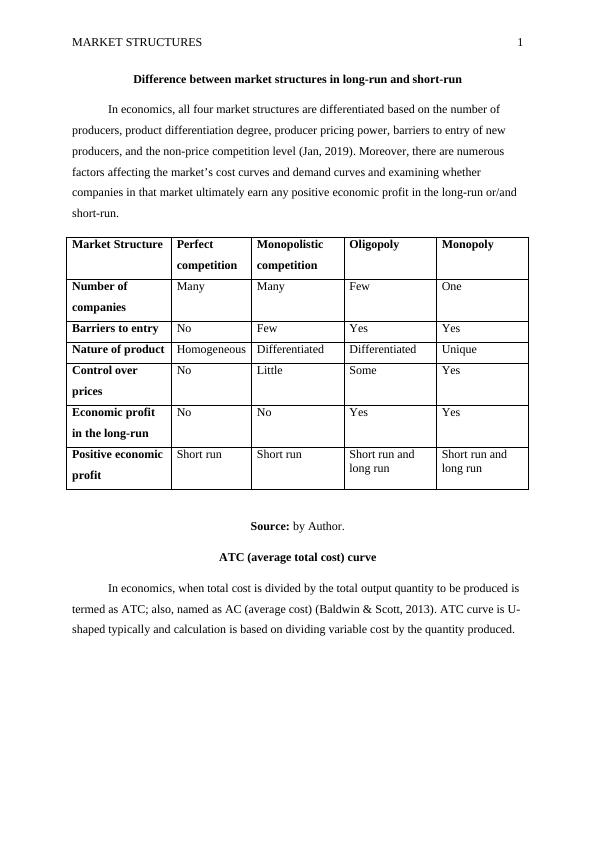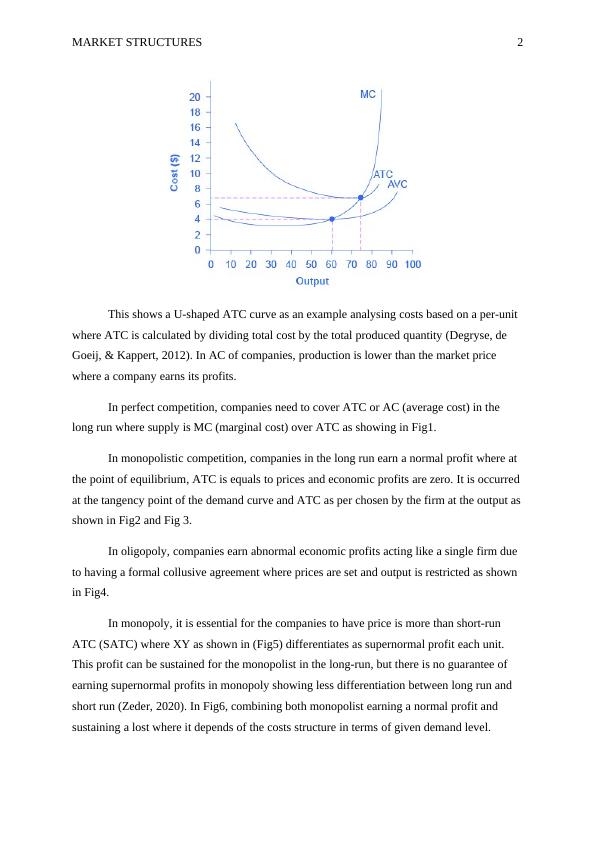The Firm and Market Structures -
Added on 2022-08-20
7 Pages679 Words12 Views
End of preview
Want to access all the pages? Upload your documents or become a member.
Monopolistic Competition and Oligopoly Markets
|10
|849
|321
Principles of Economics - Assignment
|15
|3302
|132
Economic Assignment
|23
|3778
|35
Monopoly & Monopolistic Competition in Australia
|10
|2512
|473
Market Structure of Australia: Monopoly and Monopolistic Competition
|12
|2949
|341
Economic Questions Answers 2022
|22
|4323
|64



